Zamora, Michoacán 作者: 来源: 发布时间:2021-11-18
1.Population and Area
Pop: 186,102 (metro)
Area: 19,58 km2 (city)
Elev: 1,580 masl
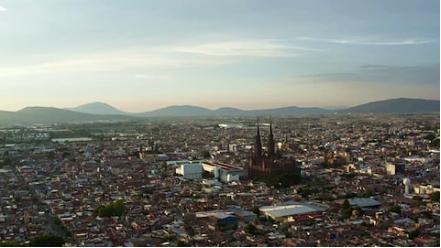
2. Natural geography
Nature and weather
The city is found in Tziróndaro Valley (Purépecha for "Swamp place"), a large alluvial plain surrounded by mountains with a northeast-southeast orientation. The topography of the region is flat with no slopes greater than 5%. During the Cenozoic the area was a flood plain of the Duero River which deposited large amounts of basalt, breccia, calcareous tuff, tuff, andesite, and rhyolite. The dominant basalt rock found in the area give the soil a rich source of calcium, magnesium, iron, potassium, and sodium. The soils in the surrounding areas are rich and fertile making the region perfect for agriculture. The soil in the area is classified as pellic vertisol with significant amounts of chromate; the soil is of fine texture with rocky layer containing rocks smaller than 7.5 cm³.
Orography
The relief is part of the Transversal Volcanic System. On its horizon are the hills of La Beata, La Beatilla, Encinar, Tecari, El Ario and Cerro Grande.
Hydrography
Two hydraulic systems cross the Zamora valley. On the one hand the river Duero, on the other, the river Celio. Several streams flow into these rivers, among the most important are the Prieto, Hondo, and Blanco streams. There is a system of dams that contain and regulate the fluvial currents made up of the Álvarez Dam, the Colorín Dam, and the Abajo Dam. Temporary surface currents are abundant depending on the time of year.
Flora and fauna
As for flora, that of the prairie predominates, with huisache, mesquite, cardonal, nopal and thorny bushes.
The fauna is made up of pigeons, quail, thrush, magpie, coyote, opossum, fox and badger.
https://www.ecured.cu/Zamora_(M%C3%A9xico)
Köppen Classification: Oceanic Subtropical Highland Climate
The subtropical highland variety of the oceanic climate exists in elevated portions of the world that are within either the tropics or subtropics, though it is typically found in mountainous locations in some tropical countries. Despite the latitude, the higher altitudes of these regions mean that the climate tends to share characteristics with oceanic climates, though it also tends to experience noticeably drier weather during the "low-sun" season. In locations outside the tropics, other than the drying trend in the winter, subtropical highland climates tend to be essentially identical to an oceanic climate, with mild summers and noticeably cooler winters, plus, in some instances, some snowfall. In the tropics, a subtropical highland climate tends to feature spring-like weather year-round. Temperatures here remain relatively constant throughout the year and snowfall is seldom seen.Without the elevation, many of these regions would likely feature either tropical or humid subtropical climates.
The Köppen Climate Classification subtype for this climate is "Cwb". (Oceanic Subtropical Highland Climate).
The average temperature for the year in Zamora de Hidalgo is 70.7°F (21.5°C). The warmest month, on average, is May with an average temperature of 76.8°F (24.9°C). The coolest month on average is January, with an average temperature of 63.5°F (17.5°C).
The highest recorded temperature in Zamora de Hidalgo is 118.6°F (48.1°C), which was recorded in May. The lowest recorded temperature in Zamora de Hidalgo is 26.6°F (-3°C), which was recorded in January.
The average amount of precipitation for the year in Zamora de Hidalgo is 33.8" (858.5 mm). The month with the most precipitation on average is July with 8.4" (213.4 mm) of precipitation. The month with the least precipitation on average is February with an average of 0.2" (5.1 mm). In terms of liquid precipitation, there are an average of 97.9 days of rain, with the most rain occurring in July with 21.4 days of rain, and the least rain occurring in February with 1.4 days of rain.
http://www.weatherbase.com/weather/weather-summary.php3?s=766621&cityname=Zamora+de+Hidalgo%2C+Michoacan%2C+Mexico&units=
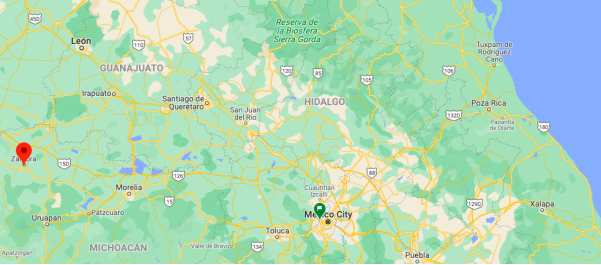
Getting there and around
Get there
By plane – You can get from Mexico City to Zamora by fly to Guadalajara airport and then drive, which costs $400 - $600 and takes 2h 30m. The quickest flight from Mexico City Airport to Guadalajara Airport is the direct flight which takes 1h 15m. Aeromar, Viva Aerobus, Interjet and two other airlines offer flights from Mexico City Airport to Guadalajara Airport.
By car – The best way to get from Mexico City to Zamora without a car is to bus which takes 7h 26m and costs $600 - $850, including tollbooths. The distance between Mexico City and Zamora is 336 km. The road distance is 419.6 km.
By bus – The cheapest way to get from Mexico City to Zamora is to bus via Morelia which costs $550 - $2100 and takes 8h 52m.
https://www.rome2rio.com/s/Mexico-City/Zamora-Mexico
Riseshare – Check out Blabla Car's carpooling service for rideshare options between Mexico City and Salamanca. A great option if you don't have a driver's license or want to avoid public transport.
Car Rental – To explore Mexico’s provincial towns and cities—including its beach locations and the scenery and attractions near them— consider renting a car for your visit. Having your own car will give you more flexibility than using public transport options and, in some cases, offer you access to places which are otherwise difficult to visit without the use of a car.
COVID19 – International entry into Mexico from United States
Allowed for: All visitors arriving by air. Mexico land borders are closed to non-essential travel
Restricted for: There are no current restrictions.
Get around
Local Buses – Local buses and mini-buses (combis or micros) are available locally for a fraction of the cost of a taxi around town. You need to speak Spanish to be able to ask for directions or ask the driver to tell you where to get off.
Taxis – Taxis in most of Mexico’s towns and cities are not metered, so agree your price before you get in. Taxi travel is very affordable in Mexico, in comparison to the USA, Canada and Europe, and so provides a viable means of public transportation in Mexico. Your hotel can arrange taxis for you; some post their rates on a board in the lobby; taxi hotel rates are usually higher than cabs you hail off the street. If you speak Spanish, you will have a distinct advantage and be able to negotiate a price with the driver.
Uber is expanding rapidly across Mexico and now offers services in cities across the country, including: Mexico City, Toluca, Cuernavaca, Puebla, Querétaro, León, Aguascalientes, San Luis Potosí, Guadalajara, Monterrey, Hermosillo, Tijuana, Mexicali, and Mérida. Uber has been adding Mexican cities to its network every year, check for availability when you arrive at your destination in Mexico.
Cabify and Didi are also developing and currently operate in cities including Mexico City, Toluca, Monterrey, Puebla, Querétaro and Tijuana. Check for availability in the city you are visiting.
These services offer people with smartphones a way to book a cab through a mobile app for a pre-agreed price. Fares are comparable with Sitio type cabs, and sometimes trade at a premium to this when local demand increases.
https://www.mexperience.com/transport/taxi-travel-in-mexico/#51
3. ECONOMY
GDP: 22,186 M MXN (2010, Zamora-Jacona metro area)
https://imco.org.mx/ciudades2010/ciudades/25_Zamora.html
4. Industry characteristics
Agriculture: Since the municipality of Zamora is located on the fertile stop, also called Ciénaga de Chapala, the area is suitable for the cultivation of vegetables, mainly potatoes and onions, and systematized irrigation sowing. But mainly the municipality of Zamora is well known for its production of superior quality strawberries and blackberries.
Agroindustry: Among its industrial activities, it stands out for its fruit packers and freezers.
Preparation of traditional sweets: another important activity is the manufacture of foods of dairy origin, such as cream, butter, cheese and traditional sweets, among which the famous regional sweet known as chongos zamoranos, a traditional milk dessert in the gastronomy of Mexico, stand out.
Key project: Zamora- Ecuandureo road section
This work will benefit thousands of Michocans in the Bajío region, with an investment of more than 500 million pesos.
After the work was stopped for 10 years, work began for the benefit of producers and society, who will see their travel times to the Mexico-Guadalajara highway, through which 2,500 vehicles travel daily.
The construction of the section will be completed in 18 total months, approximately 8 months of work remain.
https://www.elsoldezamora.com.mx/local/inician-obra-carretera-en-zamora-tras-10-anos-en-el-olvido-4103777.html
5. Attractions
Zamora's Federal Palace
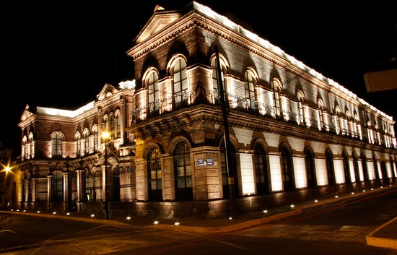
In a couple of hours you can visit the Palacio Federal de Zamora (Zamora's Federal Palace), formerly the Palacio Episcopal (Episcopal Palace), a two-level building with an English-inspired facade that has two courtyards inside. The main one has a fountain with a sculpture in the shape of a coiled snake.
The construction of this site dates from 1904, the building was the episcopal palace that would house the residence of the then new Diócesis Zamora.
At first glance you can see that its architectural design is sober, however, it sought to point out the presence of the church.
Although it did not belong for a long time to the bishopric, the enclosure has had several uses, one of them was to be the seat of the municipal presidency of the region. Currently, the building is occupied by federal government offices.
Zamora’s Museums
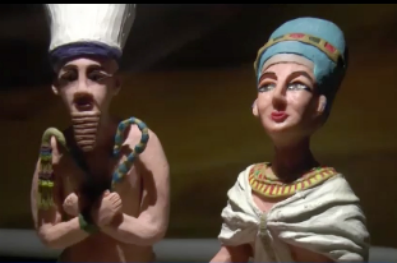
A must see during your stay in this town is the Museo de la Ciudad de Zamora (City of Zamora Museum), whose purpose is to rescue its collective memory.
Tour the interior of its facilities and learn about its history from pre-Hispanic times to the present day.
The museum is located in the Antigua Estación del Ferrocarril (Old Railroad Station) and has a photo library of more than 1,400 photographs, as well as a reading room where you can access most of the bibliography that talks about the municipality.
Another museum you should visit is the Museo Tu mundo en plastilina (Your world in plasticine museum), the first and only one nationwide that shows unique and extraordinary pieces, some recreating 19th century artifacts.
When you take a tour of the exhibition you will notice that it is a great time line that goes from prehistory, with a collection of dinosaurs, to stop by various periods of history such as ancient Egypt.
The museum is located at Calle Morelos No. 38, in the city of Zamora.
https://en.wikipedia.org/wiki/Plazuelas
La Beata Hill
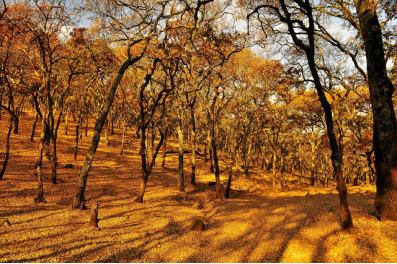
Wear comfortable and light clothes to start the day climbing the Cerro de la Beata, a landmark in Zamora, Michoacán, its 2520 meters ( 8,267 feet) of altitude make it the most outstanding elevation in the region. It is said that this hill has been the inspiration for many painters and photographers.
The first thing you should do is go to the Comision Federal de Electricidad (CFE) (Federal Electricity Commission) substation located in the community of Canindo, from here you will begin to climb along the marked path to reach the summit.
During the trip you will enjoy the natural beauty of the hill and when you get to the middle of it, stop at the viewpoint, you will be able to see a beautiful panoramic view of the urban area and its surroundings. Here you can find a camping area.
When you get to the summit you can see the cross that rests on the top and can be seen from the city because of its considerable height. This cross is in honor of the Santa Cruz, which is why every May 3rd dozens of people gather to celebrate with a mass.
https://www.visitmexico.com/en/michoacan/zamora
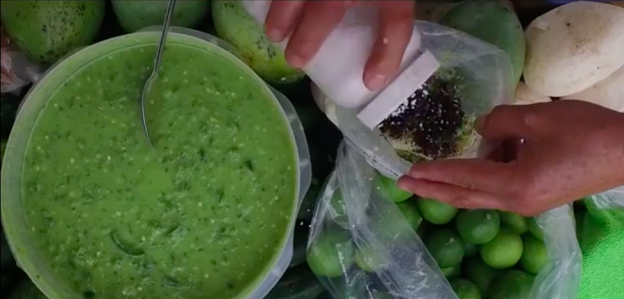
Video Turismo Zamora
https://youtu.be/6kZFOZSej94
6. History
Evidence shows the area was first settled around 1500 BC. During the Pre-Columbian Period there were several waves of migrations into the area by surrounding tribes: Pirinda, Nahua, Huetamo, Colima, and Purépecha. Zamora sits in the Tziróndaro Valley which means "swamp place" in the Purépecha language.
The village of Zamora was founded on January 18, 1574, on the orders of Viceroy Martín Enríquez de Almanza, by Spanish settlers from the Spanish city of Zamora. The Spanish were attracted to the area because of fertile valleys in the region that were well suited for agricultural development.
Zamora was awarded city status by the Constituent Congress in 1825, ratifying a decision made on November 21, 1810 by the Mexican War of Independence revolutionary leader Miguel Hidalgo y Costilla. During the 19th century, Zamora developed into a great cultural and economic center due to high agricultural productivity and flourishing commerce. On December 10, 1831, Zamora was declared the municipal seat. Later the city's elite began a political movement to create a new state in which Zamora would be the state capital. In 1846, Archbishop Pelagio Antonio de Labastida y Dávalos initiated a clerical separation from Mexico City. By 1862 a new ecclesiastical office was founded, Dioceses of Zamora based in Zamora. The political aspirations to separate from the rest of the state were impeded.
During the Porfiriato the city experienced the fastest economic growth in its history. Between 1854 and 1910, the city experienced rapid economic growth due industrial development, city modernization, technological innovations, and increased agricultural productivity. Zamora was one of the first cities in the state that implemented new technologies like: railroad stations, telegraphs, telephones, electricity, modern water systems. In 1899 the department of transportation connected Zamora by railroad to other important populations centers in central Mexico. At the same time the department of urbanization had an image they wanted for the city which involved many modernization projects throughout the city. During the Porfiriato the city had an architectural renaissance celebrating many vogue European architectural styles. Large civil offices and religious temples were erected during this time that flaunted the economic wealth of the city like: Michoacán Center for the Arts, College of Michoacán, and Obrero de Zamora Theatre. On February 2, 1898 at the feast of Candlemas led by the second bishop of Zamora, Don Jose Ma. Càzares y Martinez the cornerstone of the Cathedral of Our Lady of Guadalupe was laid. During this time many of the city's elite built new homes largely inspired by Victorian and Châteauesque architectural styles.
The Mexican Revolution reached the state in 1911, when those loyal to Francisco I. Madero proclaimed the city and surrounding area their territory. When the state governor resigned the city would continue to be involved in the war. In 1918 the state ratified the state constitution. After the Mexican Revolution, the Cristero War continued to devastate the region's agriculture which had detrimental economic effects to the city. Political hostilities would finally end in the city and vicinity in 1926.
7. Other Information: Alfonso García Robles, Nobel Prize of Peace winner
Alfonso García Robles (20 March 1911 – 2 September 1991) was a Mexican diplomat and politician who, in conjunction with Sweden's Alva Myrdal, received the Nobel Peace Prize in 1982.
García Robles was born in Zamora, Michoacán, and trained in law at the National Autonomous University of Mexico (UNAM), the Institute of Higher International Studies in Paris, France (1936) and the Hague Academy of International Law in the Netherlands (1938) before joining his country's foreign service in 1939.
He served as a delegate to the 1945 San Francisco Conference that established the United Nations. He was ambassador to Brazil from 1962 to 1964 and was state secretary to the ministry of foreign affairs from 1964 to 1970. In 1971–75 he served as his country's representative to the United Nations before an appointment as foreign minister in 1975–76. He was then appointed as Mexico's permanent representative to the Committee on Disarmament of the UN.
García Robles received the peace prize as the driving force behind the Treaty of Tlatelolco, setting up a nuclear-free zone in Latin America and the Caribbean. The agreement was signed in 1967 by most states in the region, though some states took some time to ratify the agreement.
He was admitted to the Colegio Nacional of Mexico in 1972. His name was inscribed at the Wall of Honor of the Palacio Legislativo de San Lázaro, Mexico's House of Representatives' building, in 2003. His widow died in 2005 aged 83.
8.Contact Information
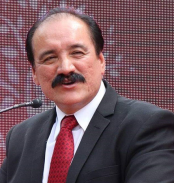
City Mayor: Martín Samaguey Cárdenas
Phone number: +52 (351) 512 0001, ext. 204
E-mail: samaguey@gmail.com; presidencia@zamora.gob.mx
Facebook: https://www.facebook.com/Mart%C3%ADn-Samaguey-252436091449767
Website: https://www.zamora.gob.mx
Govt. Office Address: Guerrero Oriente 82, col. Centro, 59699, Zamora, Mich.
